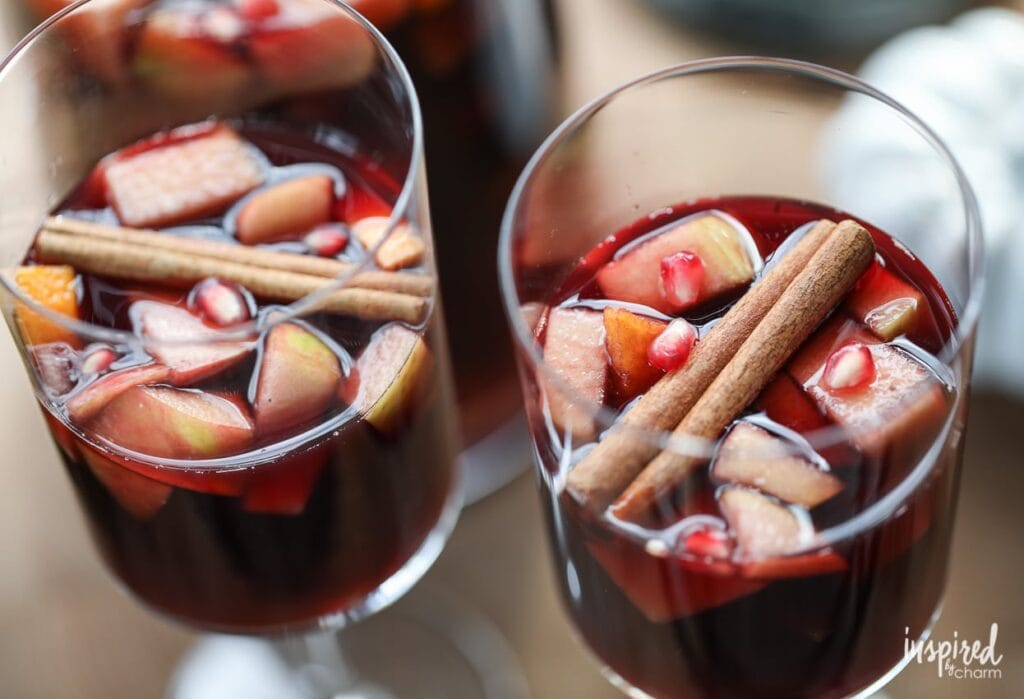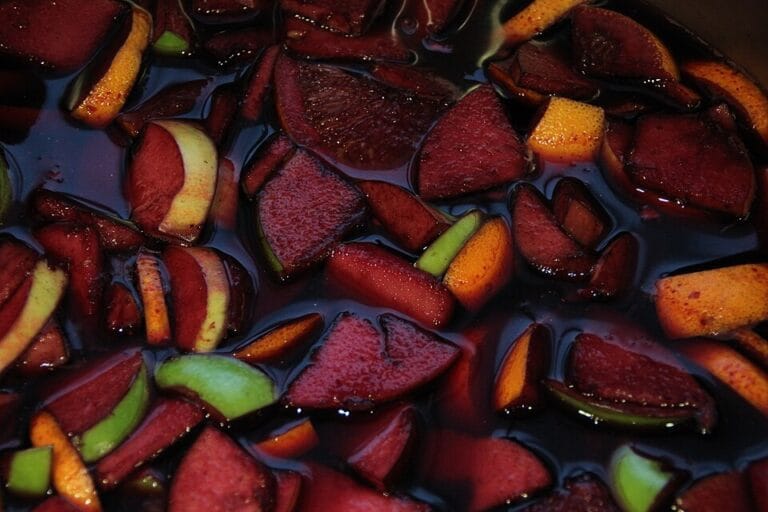Table of Contents
Toggle🍷 Introduction: The Spirit of Spanish Celebration
Few drinks in the world capture the vibrant spirit of Spain like Sangria. With its rich crimson color, chilled sweetness, and fruity aroma, Sangria has become more than just a refreshing summer drink — it’s a symbol of Spanish joy, hospitality, and celebration.
Whether it’s served at a seaside restaurant in Valencia, a rooftop bar in Madrid, or a family gathering in Andalusia, Sangria brings people together in a way that perfectly reflects the warmth of Spanish life
🏺 The Ancient Origins of Sangria
Sangria’s story stretches back over 2,000 years, tracing its roots to the Roman Empire, when wine was safer to drink than water. Romans mixed wine with fruits, honey, and spices to enhance flavor and prevent spoilage — an early prototype of the Sangria we know today.
As the Romans settled in Hispania (modern-day Spain), the tradition evolved. Over the centuries, locals adapted the recipe to their own tastes, using native ingredients and seasonal fruits. By the 18th century, Sangria had become an essential part of Spanish summer life.
The term “Sangria,” derived from sangre (Spanish for “blood”), refers to its deep red hue — a color that symbolizes both passion and festivity in Spanish culture.
🍑 What’s Inside a Traditional Sangria?
An authentic Spanish Sangria is simple yet endlessly adaptable. Its magic lies in balance — the harmony between fruitiness, sweetness, and the robust character of Spanish wine.
Classic ingredients include:
Red wine: A young, fruity Spanish red such as Tempranillo or Garnacha.
Citrus fruits: Oranges, lemons, and sometimes limes.
Other fruits: Apples, peaches, and berries for color and flavor.
Sweetener: Sugar or honey to soften acidity.
Spirits: A splash of brandy, vermouth, or orange liqueur like Cointreau.
Sparkle: Soda water or gaseosa for a refreshing finish.
To prepare it, ingredients are mixed and chilled for several hours to let the flavors blend. Some Spaniards even prepare it the night before a gathering for maximum richness.
🔗 Official Recipe Reference: Spanish Tourism Board Recipe for Sangria
🍹 Regional Variations Across Spain
Just like Spain’s diverse landscapes, Sangria takes on unique forms in every region:
Catalonia: Try Sangría de cava, made with sparkling wine (Cava) instead of red wine. Light, bubbly, and elegant.
Andalusia: Locals often prefer Tinto de Verano — a lighter version made with red wine and lemon soda, perfect for hot days.
Valencia: A fruity twist featuring peaches, local oranges, and wines from Utiel-Requena.
Asturias and Galicia: Variations using cider (sidra) instead of wine, adding a crisp, tart note.
Each version reflects the local climate, produce, and cultural rhythm — proof that Sangria is as diverse as Spain itself
🎉 Sangria in Spanish Culture
In Spain, Sangria is a social ritual, not just a beverage.
It flows freely at family reunions, festivals, and summer terraces.
You’ll find it in:
Tapas bars, often served in large glass pitchers (jarra de sangría).
Summer ferias (festivals), especially in Andalusia and Valencia.
Beach bars (chiringuitos) along the Mediterranean coast, where it pairs perfectly with seafood paella.
During national celebrations such as La Mercè in Barcelona or Feria de Abril in Seville, Sangria becomes part of the collective rhythm — an invitation to dance, laugh, and share.

🍷 Where to Drink the Best Sangria in Spain
If you want to enjoy Sangria like a local, these destinations offer unforgettable experiences:
Madrid: Rooftop bars like Azotea del Círculo or The Hat provide stunning views and high-quality Sangria with modern twists.
Barcelona: Beachfront spots in Barceloneta and El Born offer cava-based Sangria alongside seafood and tapas.
Valencia: Try traditional Sangria near the Mercado Central, made with local fruits and Valencian wine.
Seville: Enjoy Sangria at flamenco venues such as La Carbonería or Casa de la Memoria.
Every sip in these cities tells a story — of sunshine, art, and the Spanish zest for life.
🌍 Sangria Beyond Spain
Today, Sangria has become a global ambassador of Spanish culture. It appears at international events, Spanish restaurants, and summer parties around the world. However, many versions outside Spain are overly sweet or far removed from the original.
True Spanish Sangria remains rooted in balance and authenticity — it’s not just wine and fruit, but a crafted harmony.
🔗 Official Cultural Reference: Instituto Cervantes – Spanish Gastronomy
💬 A Toast to Spanish Life
Sangria is much more than a drink — it’s Spain in a glass.
It reflects the country’s sunshine, artistry, and joyful sense of community. Each ingredient, each sip, tells a story of togetherness and celebration.
Whether you taste it under the orange trees of Seville, at a rooftop in Madrid, or during a seaside sunset in Valencia, Sangria captures the soul of Spain — warm, colorful, and endlessly inviting.
So, raise your glass and say ¡Salud! — to life, friendship, and the timeless spirit of Spanish culture



[…] Sangria: Spain’s Refreshing Iconic Drink […]